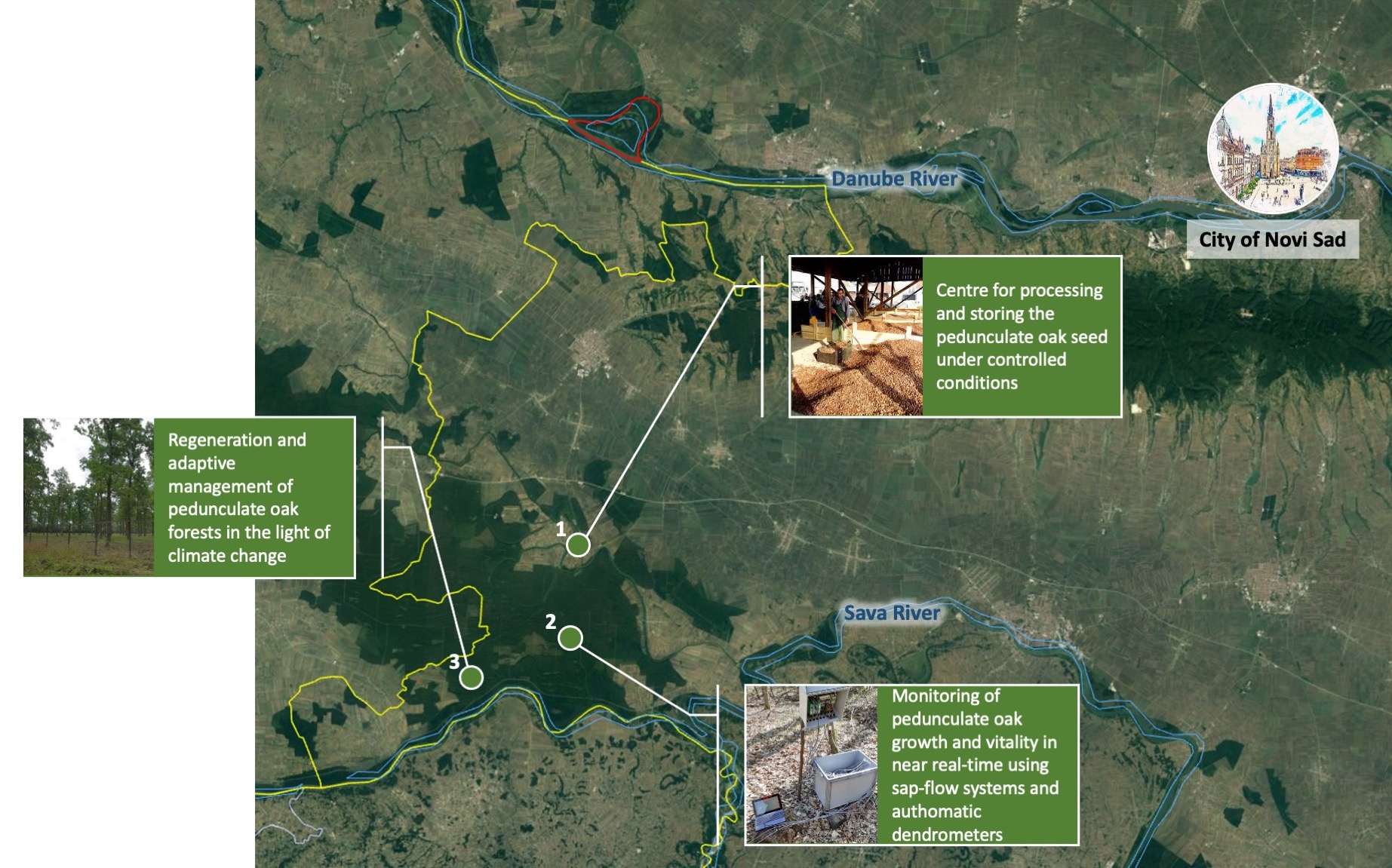Aim of the field trip is to showcase regeneration and adaptive management of pedunculate oak forests in the light of climate change. During the field trip we will visit three different sites. Maximum number of participants: 50.
The bus will leave the Hotel Centar at 8.00am and stops in front of the Hotel Sheraton and Hotel Aleksandar. Return back at 5.00 pm. Bus will be marked EFI2023 and will accompanied by host representatives. See map.
1) Seed centre for Quercus robur L.
Since pedunculate oak tree seed production periods are irregular and for the purposes of providing continuous supply of sufficient quantities for regeneration and afforestation, the centre for processing and storing the pedunculate oak tree seed in controlled conditions periods of seeding (Optimal air humidity and temperature from -2 to 0°C) was built in Morović (forest subestate). Also, for the purposes of seed protection against Ciboria sp., which attacks acorn during the preservation in the refrigeration plant on a procedure to control the presence of the fungus Ciboria sp., while not reducing seed germination, the thermotherapy procedure must be conducted. All conditions are automatically maintained and monitored from the cab of the manager, who can see the temperature value in the chamber at any time. From the chamber, the acorn passes to a cylindrical conveyor belt, where it is filtered, cooled and enters a mixer in which it is mixed with a fungicide. It is then packed in plastic crates and stored in the refrigerator. The thermotherapy line is serviced by two workers, who process about 3 tons of acorns during one shift. The work takes place in two shifts, and the capacity of the refrigerator is 100 tons of acorns.
2) Monitoring of Quercus robur L. growth and vitality in near real-time
Sap flow is a key indicator reflecting tree water status and plays a central role in plant drought research. In addition, authomatic dendrometers provide continuous measurements of stem circumference at high temporal (sub-hourly) and spatial (µm) resolutions, thus recording both stem irreversible growth, and reversible (shrinking and swelling) water status changes. The combination of the methodology of measuring sap flow and stem radial variations bring valuable information about the tree water status and its effect on inter-annual growth dynamics. Moreover, aside to measurements on trees, environmental assessment of greenhouse gases’ emission (i.e. carbon dioxide, nitrogen suboxide and methane) from the soil has been performed continuously.
3) Regeneration and adaptive management of pedunculate oak forests in Serbia in the light of climate change
Pedunculate oak forests are endangered in multiple ways, in all stages of the development, with the most challenging stage of regeneration, that needs special attention. The regeneration of pedunculate oak in Serbia is based on the shelterwood cutting system on large areas, where the understory layer and trees of the previous stand are removed in several phases in short regeneration periods (2-3 years), through the preparatory, regeneration and final cuts. Although present management models give good results, changes and improvements are needed, considering the presence of multiple biotic and abiotic factors that have negative influence on the survival and development of pedunculate oak forests.
